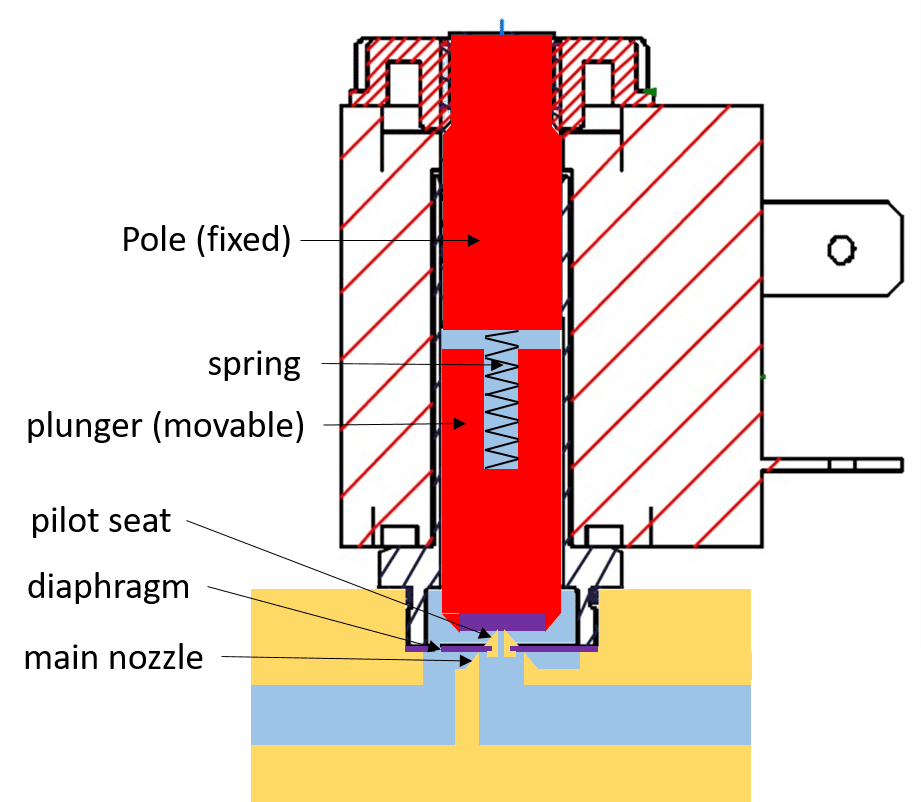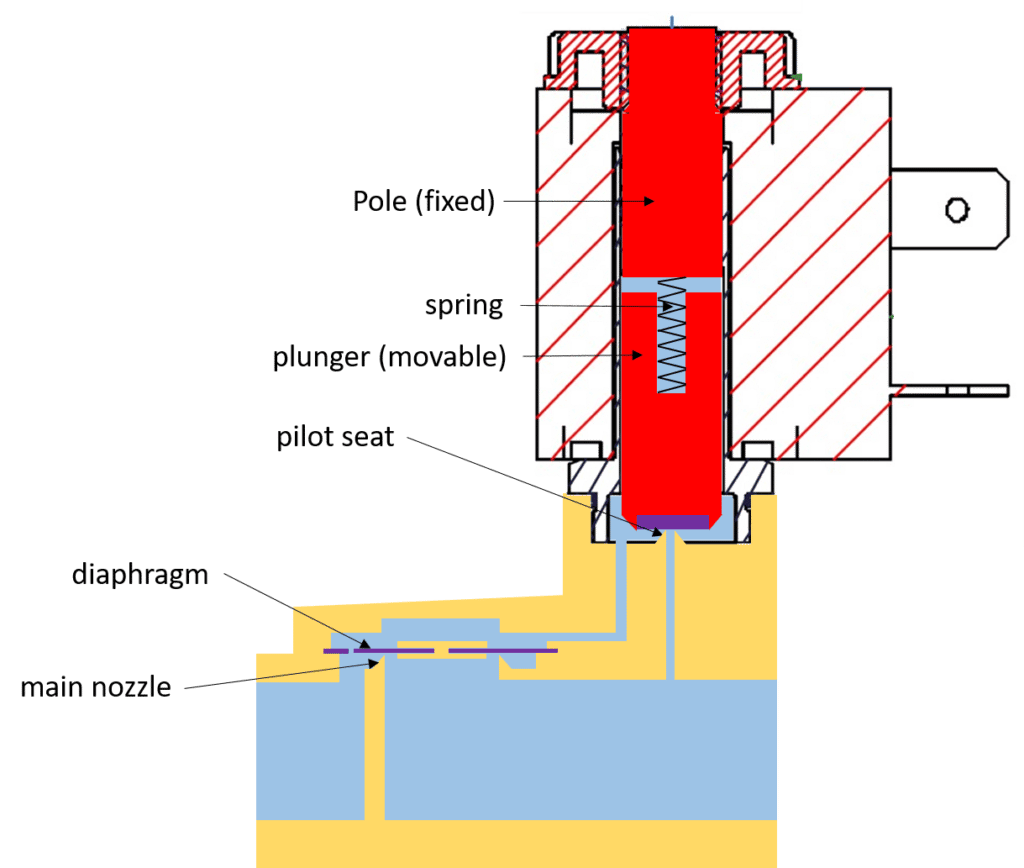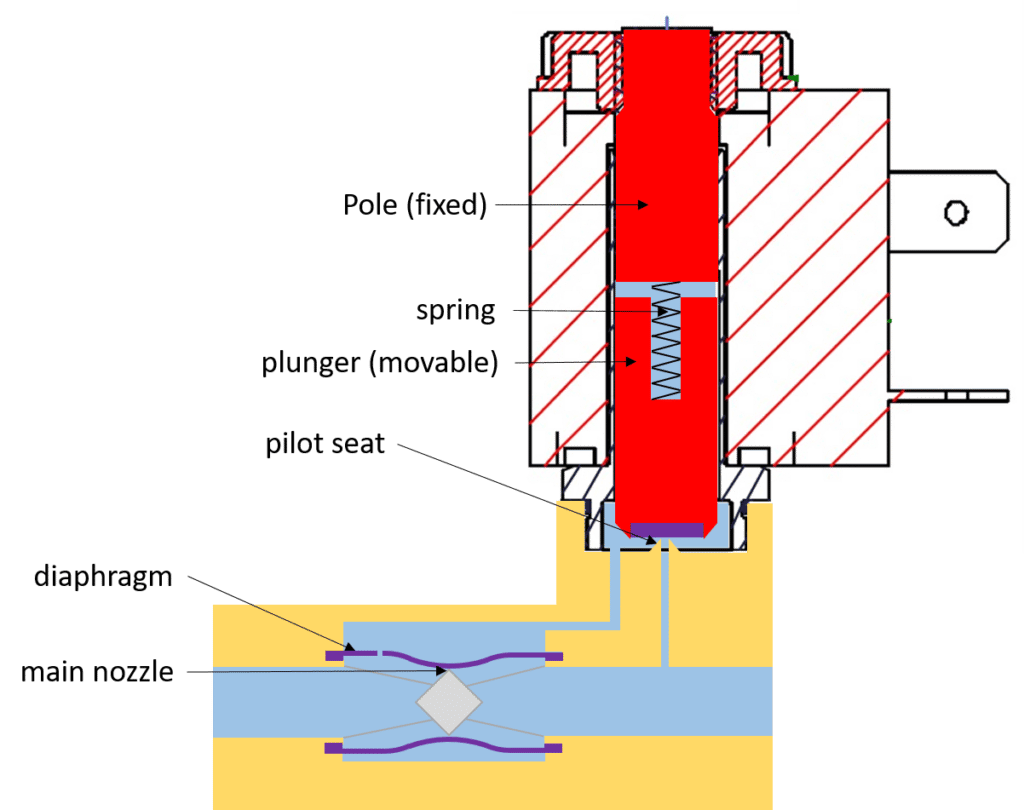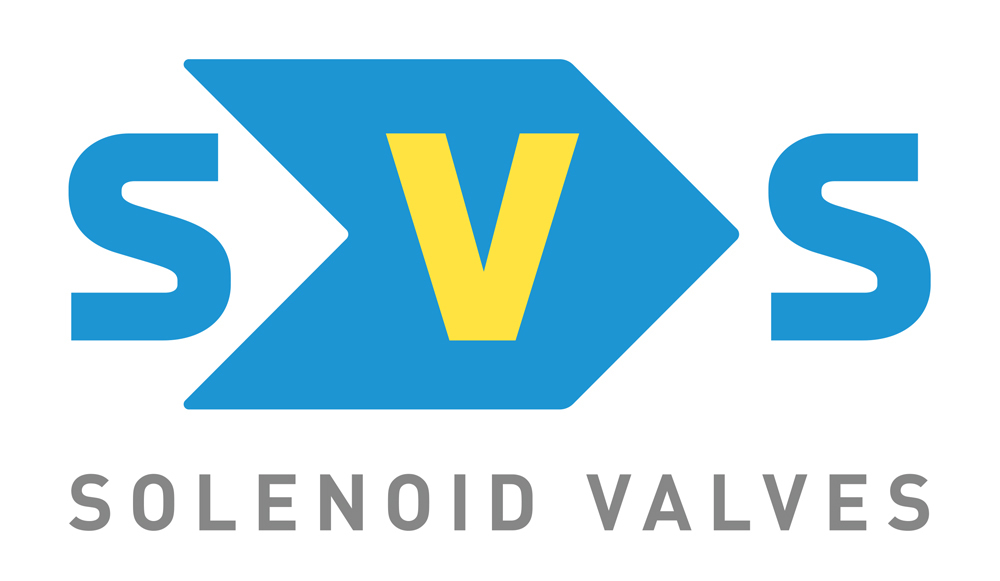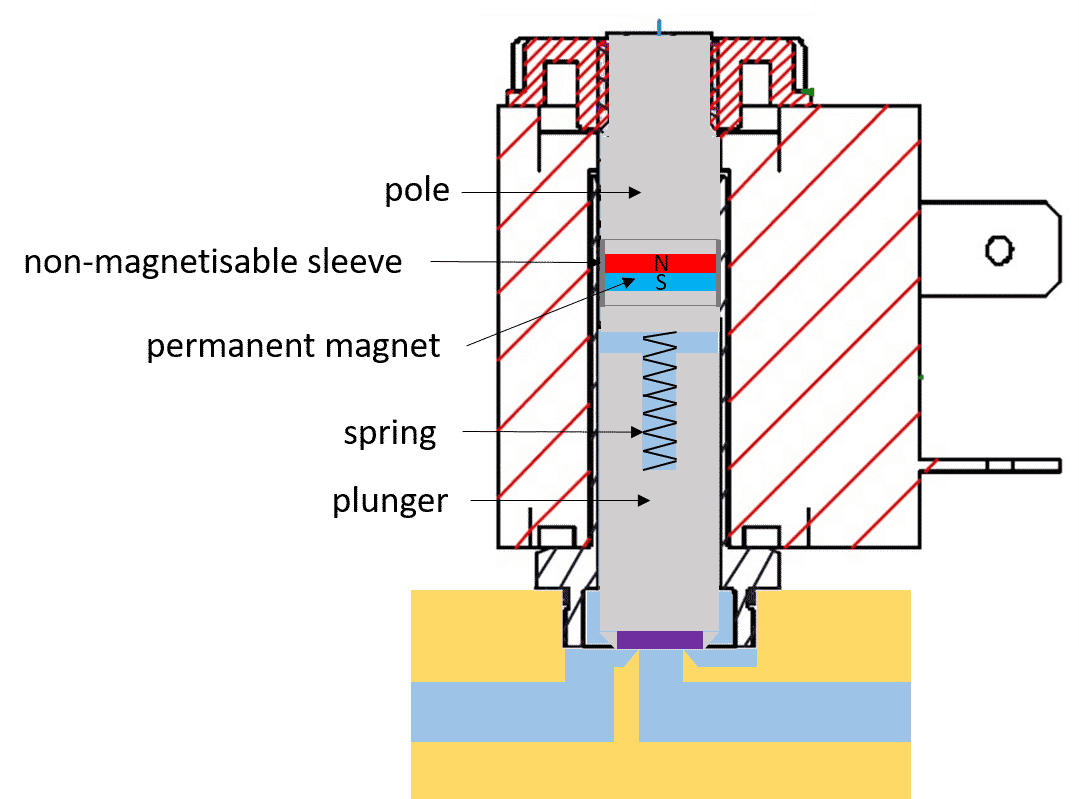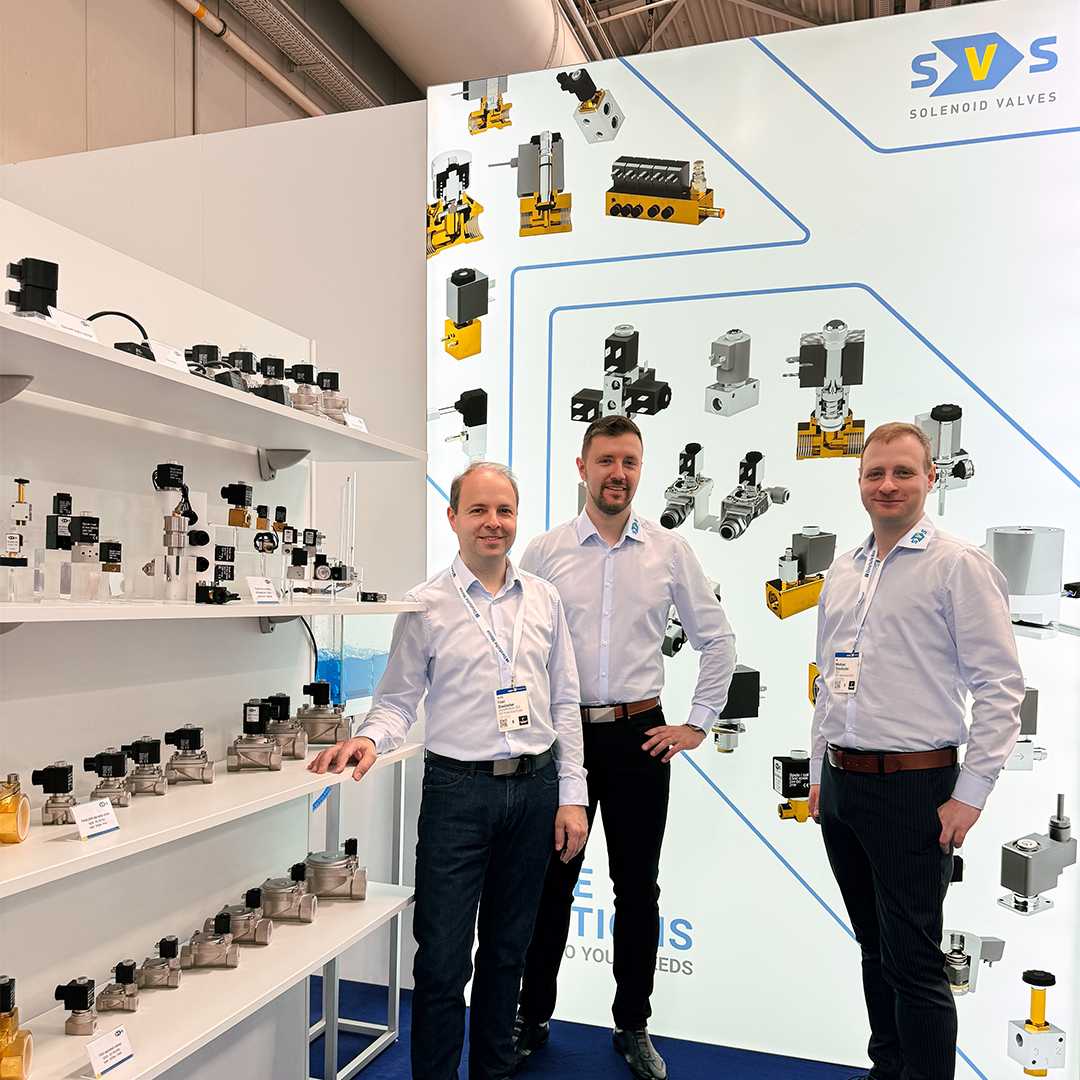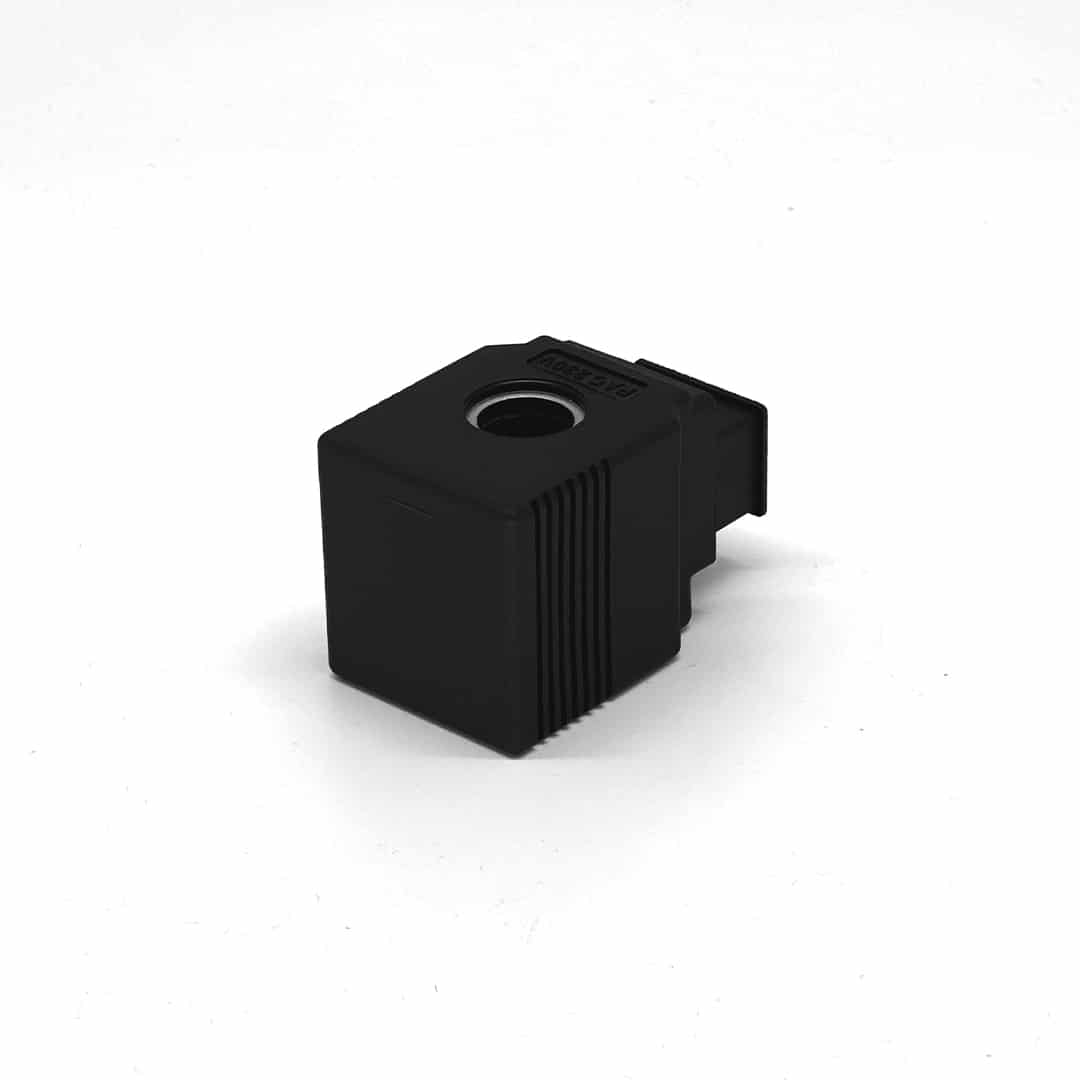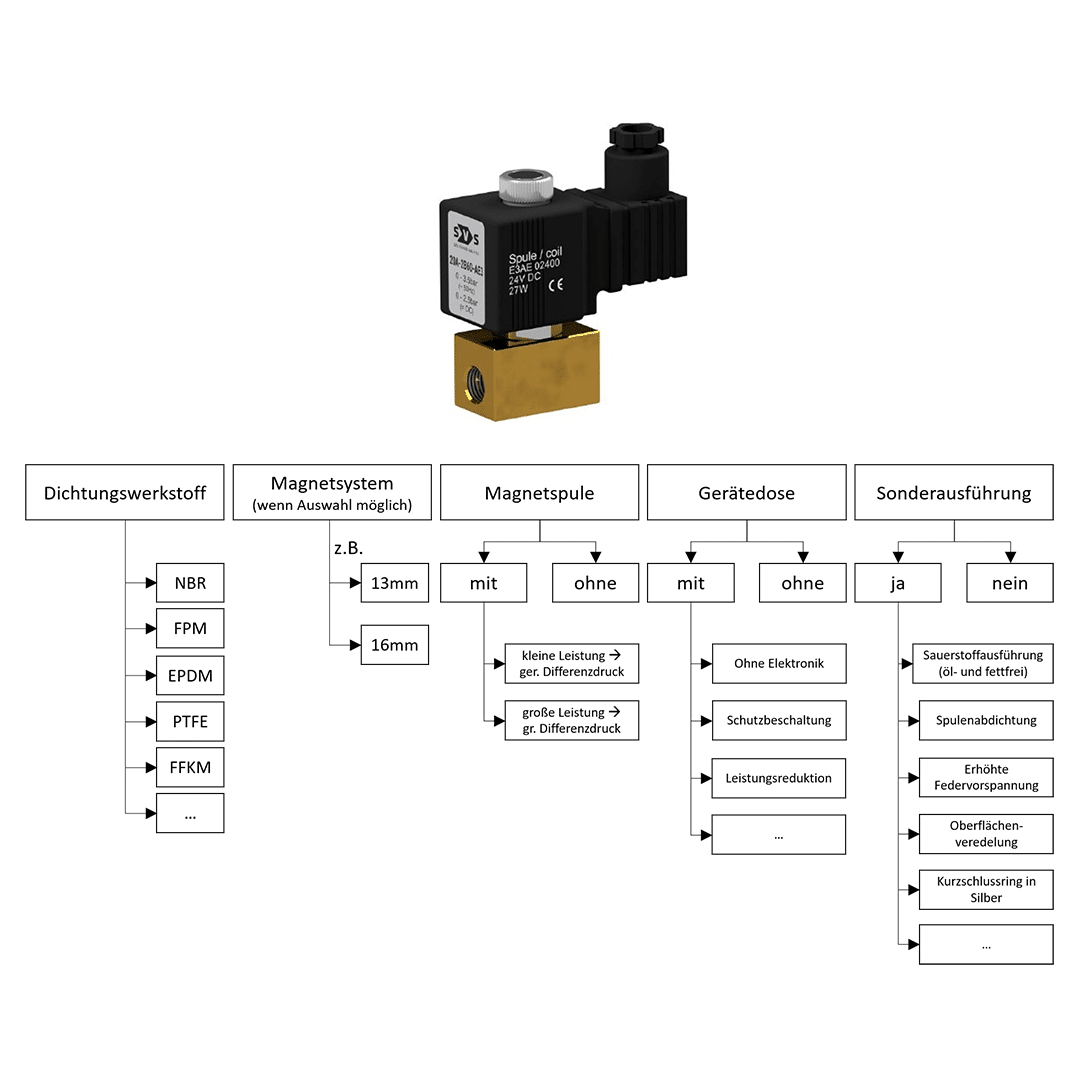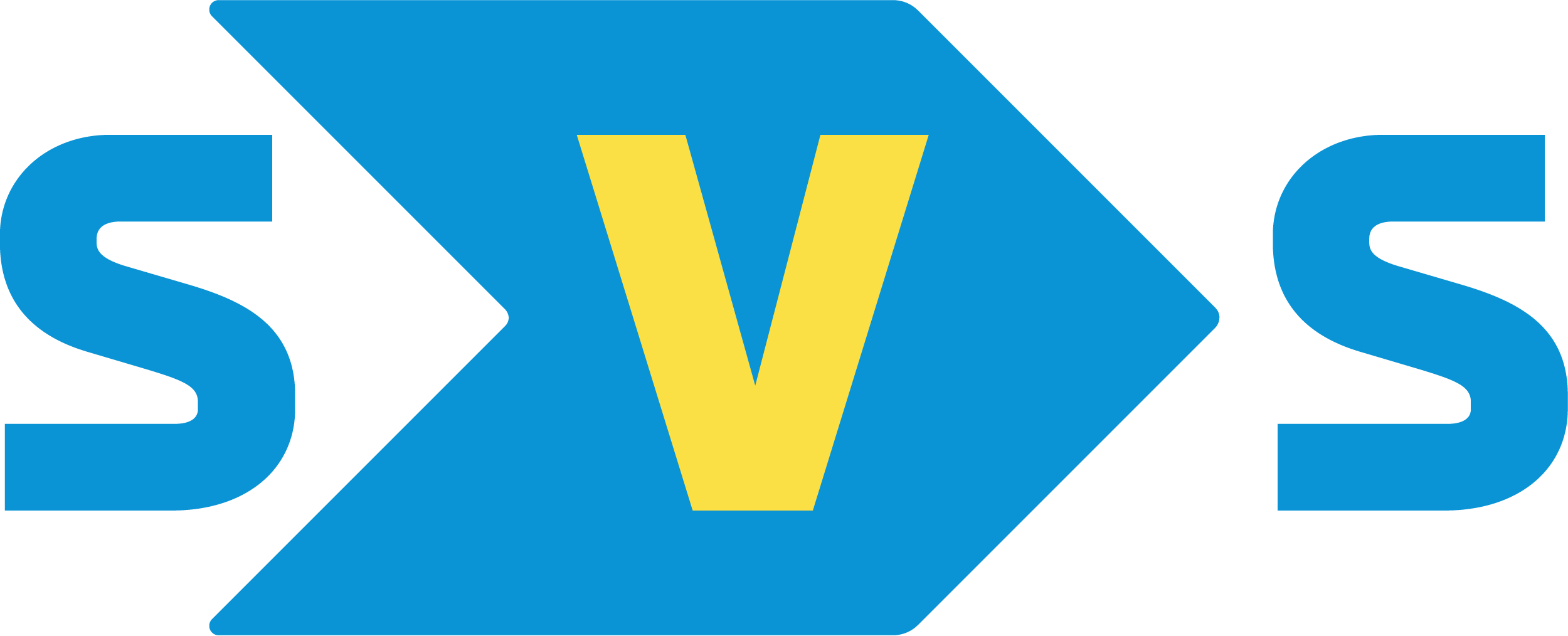A pilot-operated solenoid valve uses the pressure differential between the inlet and outlet pressures across the valve to lift a diaphragm or piston from the valve's main seat. The pilot control, a small, directly controlled solenoid valve, can be implemented as an NO or NC function and thus also determines the function of the entire valve. The task of the pilot control is to relieve the pressure on the diaphragm or the piston in order to open them using the differential pressure.
There are several ways to implement pilot-operated solenoid valves, with three NC variants being shown in the figure below.
The picture on the left shows a pilot-operated valve, with the pilot located directly above the main diaphragm. The pilot core closes an orifice attached to the diaphragm and thereby controls the valve.
In the middle picture, there is no nozzle attached to the diaphragm. The pilot of the valve is offset to this and connected to the space above the diaphragm via a duct. Again, the pilot control can be designed as an NC or NO function and thereby determines the function of the entire valve.
The picture on the right shows a third option, in which a ring diaphragm is now used instead of the flat diaphragm, which closes the valve to a centrally attached body (grey).
